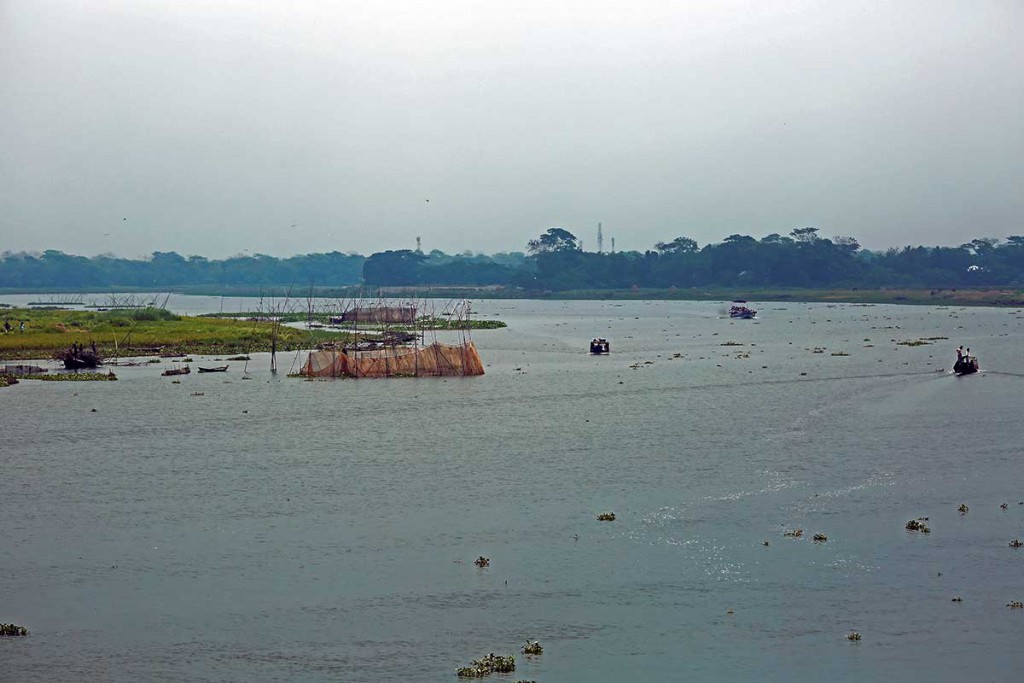In the nineteenth century, cholera epidemics ravaged Victorian London. The medical orthodoxy of the time mistakenly believed that cholera was spread by “miasma” – foul-smelling vapours that seemed to collect around the houses and latrines of the poor. Cholera was often presented as a moral consequence of the poor sanitary habits of the lower classes.
The path-breaking investigations of Dr John Snow after the Broad Street outbreak in 1854 demonstrated that cholera is a contagious disease spread by contaminated water, paving the way for great sanitation engineering projects across the developed world. The cities of industrialised nations now guaranteed safe drinking water for all of their citizens. Throughout the advanced economies, epidemics of water-borne diarrhoeal disease became a thing of the past.
The growing megacities of the global South have been less fortunate. Their governments lack the resources to provide clean drinking water to their citizens. Municipal water supplies are routinely contaminated with enteric pathogens like cholera and rotavirus. Residents of crowded slums are forced to share untreated water and dirty latrines.
The global mortality burden of diarrhoeal diseases remains staggeringly high. It is estimated that more than 2 million children die every year from these illnesses. Improvements in water quality, sanitation and hygiene would substantially reduce these deaths.
Yet for millions of people across the global South, safe drinking water remains more of a luxury than a right. Climate change will only further exacerbate this unforgivable denial of fundamental human rights.
The inability of low-income governments to build robust, modern sanitation infrastructure has motivated public health researchers to explore alternative solutions. Here I highlight a few ongoing projects at icddr,b that attempt to overcome the structural barriers to clean drinking water in novel and cost-effective ways.
Point-of-use water chlorination
In industrialised economies, piped drinking water is disinfected at centralised treatment facilities, often by applying very precise amounts of chlorine. Although these centralised facilities exist in Bangladesh and other developing countries, they are unable to consistently provide water that is free of contamination from water-borne pathogens.
Researchers at icddr,b are currently evaluating low-cost interventions for point-of-use chlorination of drinking water. A pilot study conducted from 2011 to 2013 installed 60L tanks of drinking water, with liquid sodium hypochlorite to treat the water in the tank, in 4 schools across Bangladesh. They helped students and teachers establish hygiene committees that encouraged students to drink the treated water in the tanks using their own cups and bottles, spreading positive messages about the importance of clean drinking water and hygiene. The pilot study was found to be feasible and effective, suggesting that schools may be a particularly effective site for this kind of intervention.
Subsequent work has evaluated specific commercial devices for point-of-use water chlorination at the community level. These commercial devices overcome a very sensitive hurdle in point-of-use water chlorination – the levels of chlorine that are effective while being safe are so precise that they are measured in parts per million. Unskilled water treatment can therefore be potentially life-threatening. Automated chlorination overcomes this problem by taking human error out of the equation.
A small field trial published in February 2016 evaluated an Indian manufactured water chlorinator called the Zimba in an urban community in Dhaka. It does not require electricity and relies on gravity to mix water and chlorine in the right proportions. The device was found to be effective and safe, although one drawback was that it lead to longer queues at the communal handpump.
Currently, icddr,b researchers are evaluating another device called the Flogenic, manufactured in Ireland. The proposed study will install the devices at shared reservoir tanks that typically serve 10-50 households and monitor their effect on child health. Child health will be monitored by taking blood and stool samples, as well as anthropometric measurements to track stunting.
Cost-effective point-of-use water chlorination, if widely adopted, has the potential to overcome one of the biggest infrastructural shortcomings of the global South.
Behavioral modification to encourage better hygiene
Researchers at icddr,b and the University of California-Berkeley have recently explored the effectiveness of different messaging strategies to promote handwashing and point-of-use treatment of drinking water in the urban slums of Dhaka.
Regular hand-washing and treatment of drinking water with dilute chlorine are both relatively cheap and accessible lifestyle changes that could substantially reduce the transmission of diarrhoeal disease. However, efforts to promote these behaviours face several challenges. An icddr,b study from 2010 evaluated handwashing practices in more than a thousand households across rural Bangladesh. The results were concerning: only 33% of caregivers washed their hands after defecation, and less than 1% of all study participants washed their hands before eating.
Behavioural modification campaigns encouraging greater handwashing and point-of-use water treatment have the potential to substantially reduce the transmission of water-borne enteropathogens. A number of recent studies across the world have found that disgust is a more powerful motivator for increased handwashing behavior than traditional health-based messaging centred around the fear of invisible germs. The rationale behind this is quite simple: disgust is an evolutionarily ancient innate human impulse, while health-based messaging requires some understanding of scientific medicine.
Following this rationale icddr,b researcher Kaniz Khatun-e-Jannat and her collaborators at UC-Berkeley developed a novel apparatus called the “Disgust Box” – a plastic simulation of how superficially clear piped water can come into contact with human faecal matter. Demonstrations of the Disgust Box are delivered to groups in combination with messages promoting specific behaviours – in this case: increased handwashing with soap and treatment of drinking water with dilute chlorine. The effectiveness of the disgust-based intervention in promoting these behaviours was compared to standard health-based messaging.
In a preliminary study published in 2015, the Disgust Box demonstration was found to increase hand-washing with soap in the study group, but there was no difference in effectiveness between standard health-based and disgust-based messaging strategies. Follow-up studies will have to be conducted to determine why the increased effectiveness of disgust-based messaging observed in some African countries has not been replicated in an urban slum community in Bangladesh.
For point-of-use treatment of drinking water with chlorine, neither strategy was found to be particularly effective – only about 8% of study participants in both groups were found to chlorinate their water in follow up observations. Later it was found that this had more to do with the unpleasant taste of chlorinated water. However, some households started to boil drinking water because of the Disgust Box demonstration – suggesting that, with modifications, this could be an effective way to promote point-of-use water treatment. Dr Khatun-e-Jannat is convinced of the device’s potential. “We strongly recommend to particularly use this device for promoting water treatment.”
Although initial results with the Disgust Box demonstration have been modest, they are promising enough to warrant further investigation. Future studies will combine alternative water treatments with repeated Disgust Box demonstrations.
Conclusion
It is unlikely that the governments of developing countries will catch up with their industrialised counterparts in providing clean, piped water. The resources required are simply beyond the economic means of resource-deprived countries across the global South. Decentralised, community-led efforts – e.g., point-of-use water treatment or campaigns to encourage hygiene – have the potential to overcome these structural limitations, but these efforts need evidence-based guidelines from scientific professionals to be truly successful.
We need affordable, innovative and immediately implementable programmes that will deliver fast results. Work done by icddr,b – as demonstrated in the studies highlighted here – can deliver these programmes.


